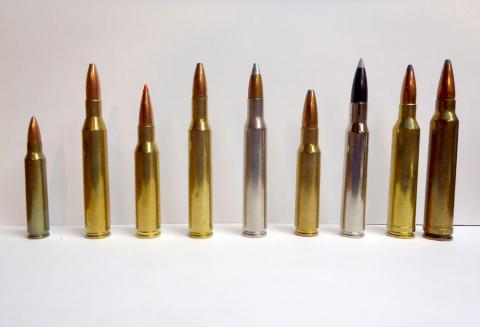Editor’s Note: Mossy Oak ProStaffer Mark Drury of Drury Outdoors is known first and foremost as an expert white-tailed deer hunter and turkey hunter. You can forecast deer movement with his app at that combines local weather info with the distinct characteristics of each of the 13 phases of whitetail season to deliver a custom forecast for peak deer activity of where you should hunt down to the hour. This app combines 70 years of Mark and Terry Drury’s whitetail hunting expertise with hour-by-hour real-time, algorithm-driven deer movement forecasts and an abundance of videoed Mossy Oak hunts. But what you may not know is that Mark also enjoys hunting mule deer and uses what he learns during mule deer hunting in September and October every year to prepare for whitetail season.
Mark Drury Loves to Hunt Mule Deer Before Whitetailed Deer Season Starts
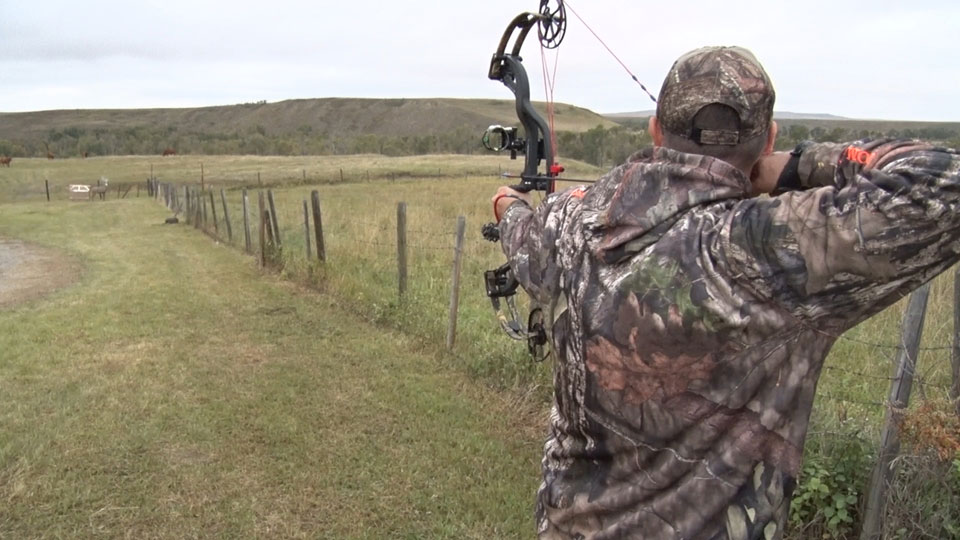
I’ve taken 18 mule deer in 18 years – almost all of them with my bow. I’m often asked how I get ready for a mule deer hunt. When I hunt mule deer, I use the spot-and-stalk technique. So, the first thing I do is make sure I’m in the very best physical condition possible. I certainly don’t want to hold back my guide or anyone else in our group, including the cameraman, because I’m not in good physical condition. I try to stay in shape all year but for my early-season mule deer hunt, I work harder to get in shape than I do for any of my other hunts.
I also practice shooting my bow all year along. But once again when I’m preparing to go mule deer hunting, I practice shooting at longer distances than I do when I’m whitetail hunting. When you shoot at longer distances than you’re accustomed to shooting, your mistakes are amplified, and you can see what you’re doing wrong much quicker. When I’m practice shooting, I also shoot from various positions. I’ve found that you’ll rarely if ever have an opportunity to have your feet squarely up under you and be in the same position from which you shoot as you are when you’re back home practicing. I shoot sitting, kneeling and bent over because those are how most of my shots have been.
I also try to shoot at different elevations. Every now and then a mule deer will be on level terrain, but most often, the mule deer at which I’m shooting will be uphill or downhill from me. I want to be certain that I’m prepared for bow shots from 50-60 yards. However, the last four mule deer I’ve taken with my bow have been more than 60 yards away when I’ve shot. Today, I often practice shooting out to 70-80 yards. However, hoping I never have to take a shot that far. Most of the places I hunt for mule deer I won’t have a shot at 60 yards or less.
Something else people ask me is what type of boots I wear when I’m mule deer hunting. I like the Danner hiking boots and wear these boots all year. Your boots are your wheels on the ground when you’re hunting. If you get blisters on your feet, or you’re uncomfortable in your boots, mule deer hunting will be miserable.
Also I don’t make any changes when I’m hunting mule deer from when I’m hunting whitetails. I really like a Leupold range finder, featuring angle compensation. My binoculars are Leupold 15x, and I call them my Superman Eyes, since I can see an antler tip of a mule deer even in the shade of a tree. I wear the same daypack for whitetail or mule deer hunting. I prefer to wear Mossy Oak Mountain Country /camouflage/mountain-country camo. Much of my mule deer hunting is done in Alberta, Canada, in the foothills of the Rocky Mountains, and that Mountain Country blends in best there besides blending in with a variety of terrain types.
Mark Drury’s Biggest Mule Deer Buck
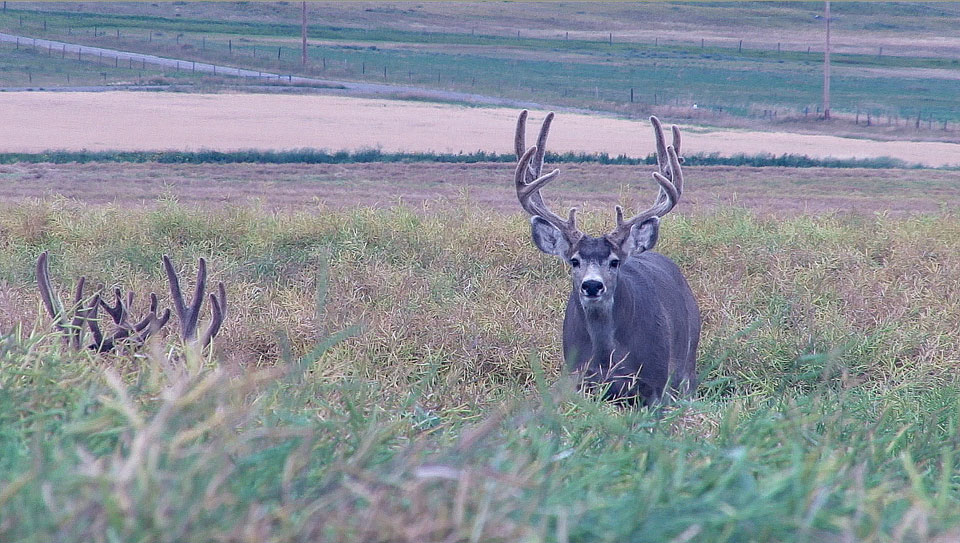
I took a big mule deer in the fall of 2015, and he scored 198 Pope & Young (P&Y). He was a true whopper – a giant mule deer! I finally took him at 60 yards, and we hunted him every day, all day. Then I finally found him out in a field of canola. We were standing in a sprayer track about equal in size to the sprayer track where the mule deer was walking, in head-high canola. This giant was with several other bucks, and the only shot he presented to me was when he was walking in the sprayer track that was parallel to the sprayer track where we were walking. Sprayer tracks aren’t very wide, and I realized that if I didn’t take a shot I probably wouldn’t get another shot at him. I shot that buck with a Rage 2.3 Chisel Xtreme broadhead. I was shooting a PSE Carbon Air bow and hit this big mule deer center body late in the afternoon. Then he ran about 200 yards in that canola.
Due to the late time, we decided to let him lay overnight, since the weather would be cool, and the meat wouldn’t spoil. That muley stayed in the canola. When we located him the next day, we quartered him to get him out. Although blood trailing through such thick cover is often difficult, finding this mule deer buck was relatively easy. Everything he’d touched was red. That buck matted down the canola where he went, making the trail much easier to follow. When we found the mule deer, the canola was over head-high. Luckily five of us were on the hunt, so we had plenty of hands to help carry that big boy out.
Mark Drury’s Most Difficult Mule Deer Shot
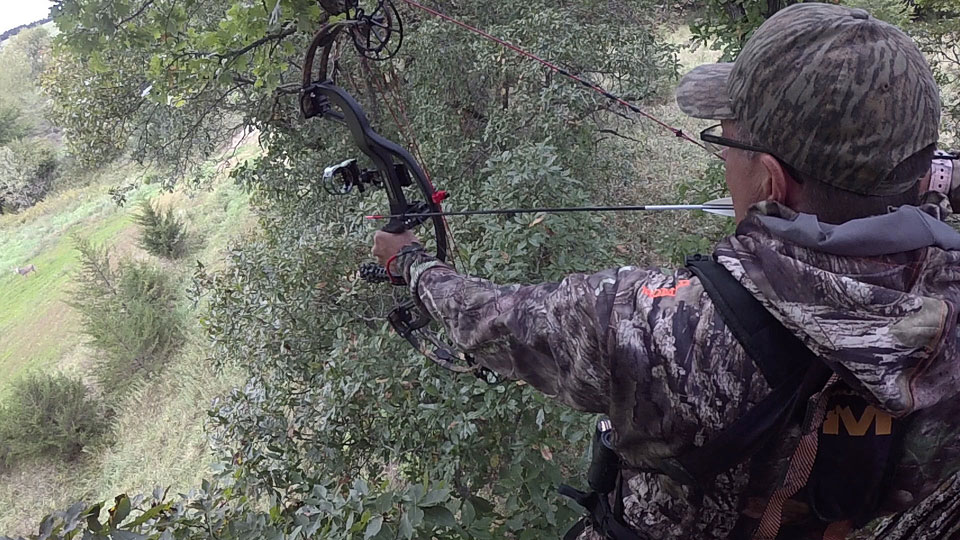
I was hunting with friends on the side of a hill when we spotted a mule deer buck that would score about 165 Pope & Young. Over the years, I’ve learned when mule deer hunting that you must have the wind in your favor to stalk mule deer. So, we went way around the hill when we saw this buck, and we let him walk under us further down the hill. We were hoping the buck would take a trail that was about 30 yards away from where we were. But instead he took a trail that was about 61 yards away directly away from us. I knew I had a very steep angle to shoot that muley. When I started aiming, the mule deer buck was almost straight below me.
That’s exactly the reason I suggest that anyone planning to hunt mule deer practice shooting with an angle compensation range finder like my Leupold. The only way you can build confidence in a range finder is to practice with it. I’ve been using this range finder for so long that I’ve learned to trust it. I’ll shoot whatever yardage the range finder tells me to shoot. No matter what kind of terrain and the angle you must shoot when you’re hunting, I’ve learned that my angle-compensation device in my range finder doesn’t lie. Even when the yardage it tells me sometimes doesn’t make any sense, I know to believe in my range finder. Whatever that range finder tells me the yardage to shoot, I’ve learned through the years to trust it implicitly. I know that the range finder I use works perfectly with the IQ bowsight I use. I believe I can make any shot, as long as I trust my range finder and my sight. I’ve always been able to shoot a bow fairly well. The longer distances that I shoot and the different angles I shoot have given me confidence that I can absolutely trust that range finder and bowsight.
I don’t shoot out to 100 yards when I’m practicing, because I usually don’t have that much land where I can practice those longer shots. I believe I might could shoot at 100 yards, if I practiced at that distance. I do practice shooting at 70-80 yards most of the time. I rarely practice at shorter distances, except when I’m checking my pinsights to be sure that they’re on target at those shorter distances. If you can correct the mistakes you make at 60-70 yards with your bow, then you should be able to shoot a nickel-sized target at 20-30 yards. If you can keep your arrows within a softball-sized target at 60-80 yards, you absolutely can dot an i at 20-30 yards. The reason I’m so high on using an angle-compensation range finder and practicing out to 70-80 yards is that I was shooting almost straight down on this most difficult shot at a mule deer at 61 yards; I took the muley’s heart out. What was lucky about that shot was that when the arrow struck the mule deer, he started rolling downhill and ended up to within 10 yards of a county road. So, getting him out of the woods wasn’t difficult at all. And, no, that roll downhill didn’t damage that buck’s antlers at all.
Mark Drury’s Hardest Mule Deer Hunt
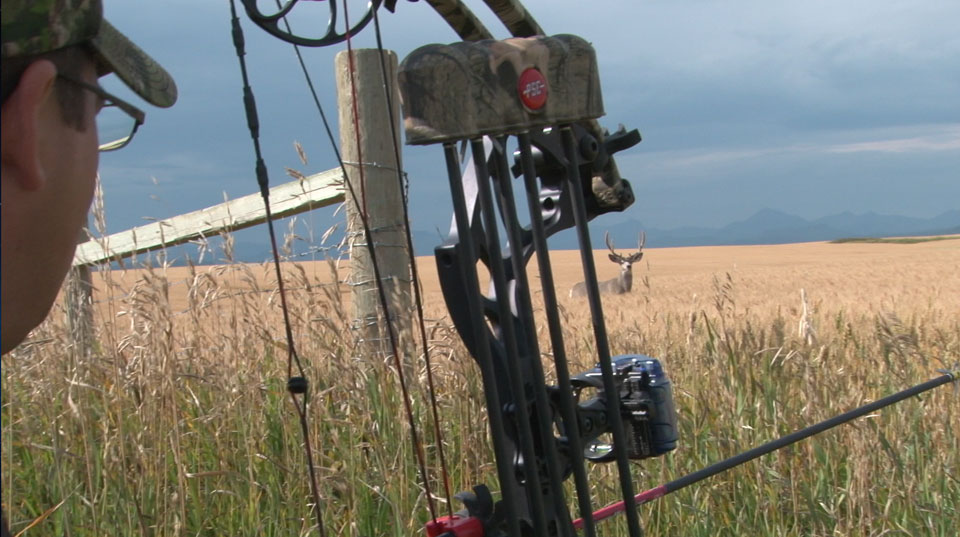
I never will forget my hardest mule deer hunt. I thought I was doing good but realized too late that I actually was doing badly. When I took my wife, Tracy, on a mule deer hunt for our 15th wedding anniversary, this trip of a lifetime didn’t work out the way I thought it might. We hunted just outside of Colorado Springs. We walked our tails off on that hunt. I enjoyed every minute of it, but then I started feeling bad because Tracy was starting to get blisters on her feet, and she wasn’t enjoying the process and all the walking and climbing. We wanted to make this a special trip. She was a trooper, and she hung in there. We hunted very hard for seven days.
Finally on the last day of our mule deer hunt, Tracy shot a mule deer that gross scored 187 with an open-sighted Traditions muzzleloader. We’d spent a lot of time getting her ready to take the shot before the trip and making all the preparations for the trip. I started feeling badly about the second day of the hunt when I realized that Tracy wasn’t enjoying the hunt as much as I was. However, the hunt ended well because Tracy took that really nice mule deer. But we haven’t done any mule deer hunts together since then, and I really don’t see any mule deer hunts in our future.
One of the things I admired about Tracy was that she wouldn’t quit. She’s hard headed like me, and when she sets her mind to do something, she’ll do whatever is required to accomplish that task. We were seeing plenty of nice mule deer every day we hunted. However, we couldn’t get close enough to any of them for Tracy to take a shot. We were like the mule that had a carrot on a stick out in front of himself. He kept seeing the carrot but just couldn’t get to it. And Tracy kept on going although I knew she was hurting. I felt badly about taking her on that hard a hunt. The only thing I could compare to that mule deer hunt would be if Tracy made me go shopping with her for seven days. I’d probably leave after day two. I was proud of Tracy. She squeezed the trigger once the buck was about 60-yards away. She made a high lung shot, and the buck didn’t go anywhere.
Mark Drury Explains Hunting Mule Deer
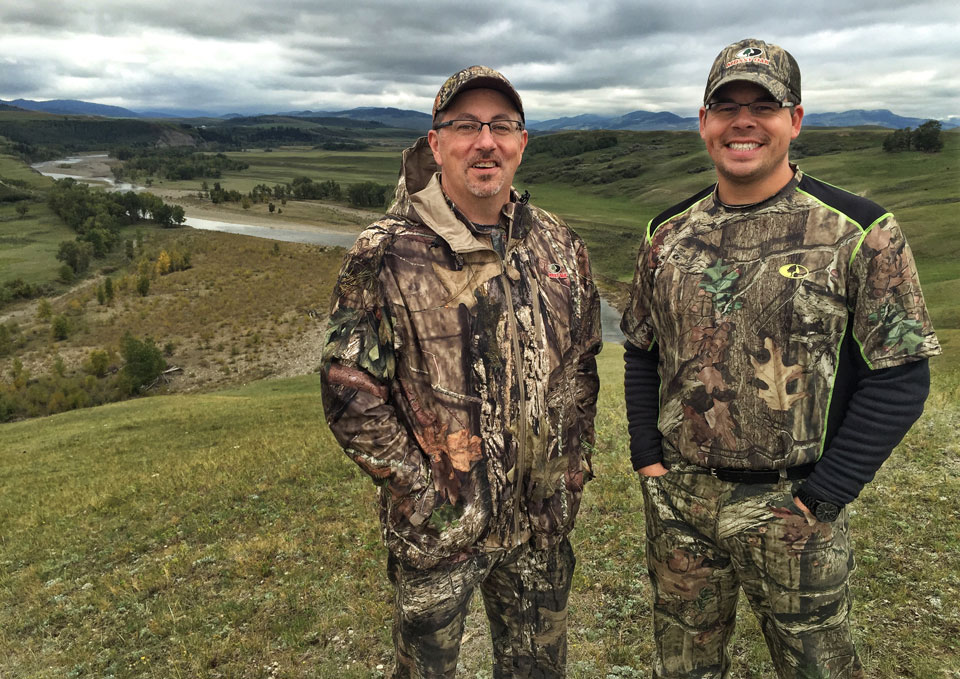
I’m often asked what I like best about mule deer hunting. I guess I love to mule deer hunt because I can start hunting mule deer in Canada in September or October. The seasons for mule deer hunting are open before whitetail seasons open. For me, mule deer hunting is much like turkey hunting, since you’re constantly moving, trying to find a mule deer buck you want to take. Then after you spot him, you have to work with the terrain and the wind to try to get into position to take that buck. Even when you think you’ve got that all worked out, often mule deer won’t do what they’re supposed to do.
For me, mule deer hunting is like a chess match. When I’m hunting whitetails, I get in my tree stand after I’ve been scouting and learning all I can about the deer I want to take and then wait on the whitetails to come to me. But when I’m hunting mule deer, I’m taking the hunt to the muleys. I enjoy that aspect of being able to make something happen. To be completely honest, I mess up at times. Mule deer can be really tough to spot and stalk with a bow. I have a lot more failures than I do successes when hunting mule deer. I think at the end of the day, failure is what makes all of us better hunters and better people. We usually learn more from the failed hunts we go on than the successful hunts we take. In life, we often learn much more when we fail, than we do when we succeed.
I always travel to Canada during the first week of September when the mule deer season generally starts. The country and the terrain are so beautiful there in Canada. I’ve also become very good friends with my guide there, Cory Jarvis of Alberta. I’ve hunted with Cory for 15 years. I like the terrain, enjoy Cory’s friendship and like to test all my hunting and shooting skills well before whitetail season starts in the Lower 48 States.
Alberta’s weather is unpredictable. I’ve seen temperatures in the 90s and also the 60s at that time of year. Although most of us think of Canada as being cold, I’ve found it to be much hotter in September there than I would have believed if I hadn’t hunted up there in that early season. So, something you may not think about if you decide to go to Canada in September to hunt muleys is that you’ll need to bring plenty of sunscreen. If you find a big mule deer, and he’s bedded-up, you may spend the hottest part of the day sitting in the blistering sun. The worst sunburns I’ve ever had in my life have come while mule deer hunting.
I usually plan for a week-long mule deer hunt, and often I may not harvest a buck muley until day five. I have taken a mule deer buck on day two before but never on day one. I usually require about five days to get a muley within bow range.














